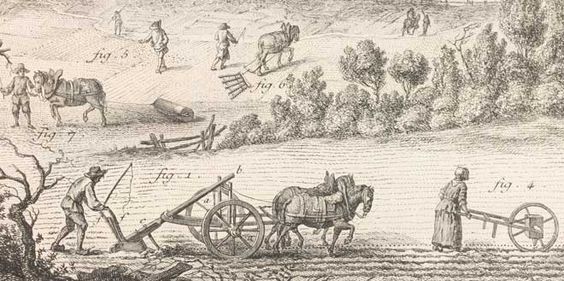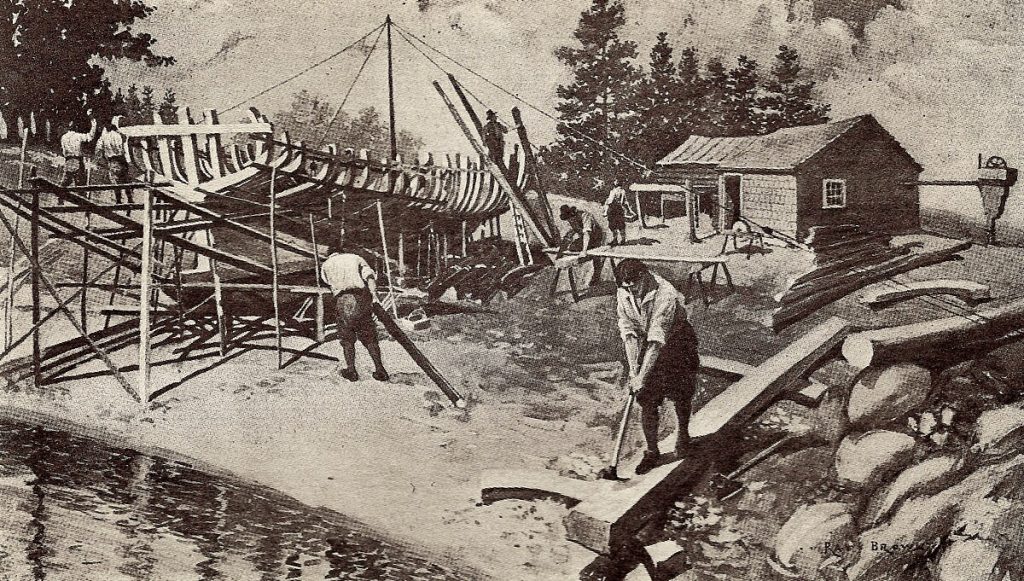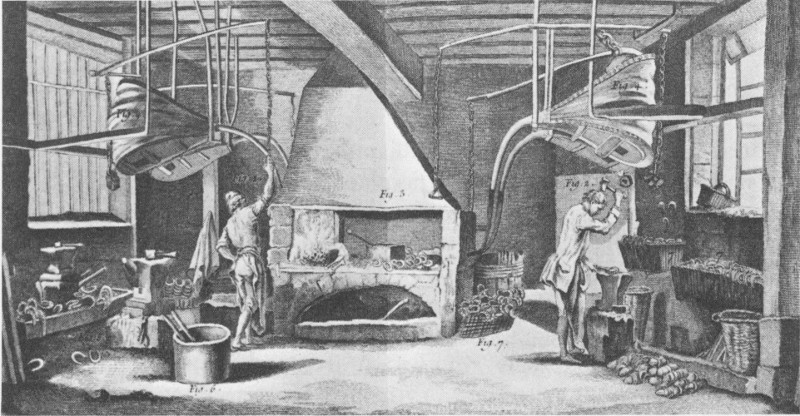Contents

Contents
The Middle Colonies of Delaware, New Jersey, New York, and Pennsylvania produced a diverse economic output, with a focus on farming, leading to this region becoming known as the “breadbasket” of British North America.
Farming
Agriculture

The largest economic activity of the Middle Colonies was in agriculture.
This part of America enjoyed fertile soil and an ideal climate for growing a wide range of different crops, including wheat, barley, rye, maize, peas, and buckwheat.
By contrast, New England soil was rocky and not especially fertile, and the southern colonies focused on cash crops such as tobacco, instead of staples like wheat. As a result, the Middle Colonies were America’s biggest producers of food in the 18th century.
The region was also home to a large number of orchards, complementing a strong apple and cider-brewing industry.
In addition, flax and hemp crops were grown, which were often used by families to make garments, sheets, and other textile products, like tablecloths. Flaxseed and linseed oil were also produced, which were used in paints and varnishes.
Livestock
The Middle Colonies were also a hub for livestock farming.
Cattle (cows) were the most commonly kept type of livestock, but pigs and sheep were also raised for their meat and other products. Animal hides were used to make leather for clothes, and tallow was used in cooking, as well as to make candles and soap.
Due to the number of cattle kept by Middle Colony farmers, dairy was also an important economic output for the region.
How farms worked
Farms were mostly owned by individual families who would work to support their own needs, and sell surplus grain or other products on the open market.
The majority of farms in the Middle Colonies were owned by the family, except in the Hudson Valley, where it was more common for tenant farmers to rent land from wealthy landlords.
Workers from England, Ireland, and Germany helped to supply seasonal farm labor. These laborers were often indentured servants, who agreed to work for free for a set period of time, in return for their passage to the Thirteen Colonies.
African slave labor was also used on some farms, especially in New York City and parts of New Jersey, but was less common compared to in the south.
While men worked on the farm, women were responsible for creating finished products at home, such as churning butter, sewing clothes, and making soap.
Timber and shipbuilding
The Middle Colonies of New York and Pennsylvania had thriving shipbuilding industries, though the industry was smaller than in New England.
The region was home to two of the most important ports in British North America: New York and Philadelphia, and also enjoyed access to abundant forests. Timber was also exported to other colonies to support their shipbuilding industries.
Thanks to the Middle Colonies’ diverse system of estuaries and ports, ships and other goods could be easily transported elsewhere in the Thirteen Colonies and further afield for export.
Iron and smelting
A smaller but still substantial economic output of the Middle Colonies was the production of iron.
Iron ore was mined locally in Pennsylvania, New Jersey, and New York, and turned into bar iron or pig iron in forges or blast furnaces.
From there, gunsmiths used the iron to manufacture weapons such as long rifles and cannons, and iron mills made other products such as nails, hinges, locks, braces, chains, barrel hoops, and more.
However, local production of finished iron products was limited, especially from 1750 onwards, when the British passed the Iron Act.
This law restricted colonial ironworking, and instead encouraged the export of raw iron to Great Britain, in order to protect British iron mills.
Trading partners
The Middle Colonies had a wide range of trading partners, though trade was centered around British and British-owned ports.
Great Britain imported pig iron and bar iron from the Middle Colonies, as well as lumber and flaxseed/linseed oil.
Other British territories in the West Indies also traded with the Middle Colonies, primarily importing agricultural products such as flour, corn, peas, and pork/beef.
Many European countries traded with the Middle Colonies as well – Ireland purchased grain and meat, while Portugal imported American wheat due to local shortages.
Goods were also traded with Native American tribes, such as the Iroquois. The colonists often exchanged foodstuffs for furs, such as beaver and deer skins.
In return, the Middle Colonies imported a wide range of goods, such as wine from Portugal, sugar and molasses from the British West Indies, ceramics, tools, and other finished iron products from Great Britain, fish, rum, and salt from New England, and rice and tobacco from the Chesapeake and the Lower South.



